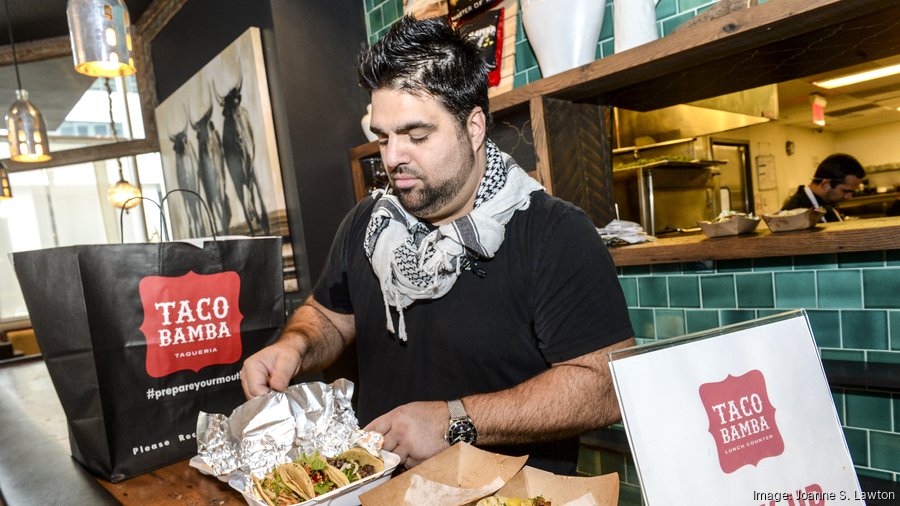Back in November, Del Campo owner Victor Albisu scrapped the expense account, full-service lunch at his spiffy downtown restaurant and started serving tacos from his wildly popular suburban taco spot, Taco Bamba, at the bar.
The move surprised observers downtown, where Albisu is known for his higher-end fare. It even surprised Albisu himself, who says that in the past he would have been too worried about the mixed message and brand confusion to try something like this.
He shouldn’t have worried. Downtown workers flocked to the pop-up, which Albisu in January decided to make permanent. Customers regularly line up out the door to either take their tacos to go or eat them out of red plastic baskets after seating themselves at one of Del Campo’s tables. The tablecloths have been conspicuously removed.
Albisu’s experiment is a microcosm of the state of lunch overall, which is, in short, dismal. Americans made 107 million fewer trips to full-service restaurants at lunch time in 2017 than they did the previous year, which represented a 2.8 percent drop from 2016, according to NPD Group, a global market research firm.
Across Washington, fewer restaurants are boasting waits at lunch, a combination of the fact that fewer people have time for a sit-down lunch and that there are so many restaurants for the people who do.
“The power lunch is something I can tell you is not what it once was when I was coming up as a chef 10 or 15 years ago,” Albisu said. “It’s just not.”
Even Old Ebbitt Grill, the consistently high-earning restaurant at the heart of the Clyde’s empire, doesn’t do quite the lunch business it did five or 10 years ago. In 2007, about 35 percent of Ebbitt’s sales were attributed to lunch. Today, that’s down to 30 percent, according to the restaurant group.
“Ebbitt, they still go on a wait every day for lunch,” said Clyde’s Restaurant Group CEO Tom Meyer. “But normally, most of the places don’t have a wait. The competition is much more fierce than it was five years ago.”
Across all of the Clyde’s group, the percentage of sales from lunch is down. In December 2007, about 32.5 percent of sales came from lunch; in December 2017, that number was 27.7 percent.
So-called “grocerants” — grocery stores offering restaurant-quality prepared foods and, often, a place to sit and eat them — and fast-casual dining options have exploded in the past five years, and they make it easier than sitting down for an hour-long meal.
“It doesn’t cost a lot less than what we would charge with a tablecloth and service, but you feel like you’re more in charge of your own timing,” Meyer said. “Also, 15 years ago, people didn’t eat lunch in a grocery store.”
Lunch is often a loss leader — which is why more restaurants outside of downtown aren’t necessarily bothering with it.
“At dinner time, you get three turns, but at lunch, you only get one turn,” said Meyer, referring to the number of seatings. “It’s not as profitable, so you’ve got a lot of places who just don’t open for lunch.”
The sheer volume of new full-service restaurants also cuts into everyone’s lunch business, added Gus DiMillo, one of the co-founders of Passion Food Group. The owner of District Commons, PassionFish, Acadiana and others has shuttered several of its downtown D.C. restaurants in recent years, including the venerated former power lunch spot, D.C. Coast.
“I wish it was more, but the pie keeps getting smaller, especially when you’re down by center city,” DiMillo said. “Eleven new restaurants have opened up within walking distance of Acadiana, so it gets tougher and tougher. The lunch business is still there, but it’s not quite as packed as it used to be, because we’re sharing that piece of the business with a lot more restaurants.”
Diners who are still lunching are spending less, DiMillo added.
“Maybe two courses — maybe,” he said. “Everyone’s watching what they eat, everyone’s watching their clock. They want it to be good and fast, so they can get out. They want it to be more casual.”
Cost cutting at some D.C. law firms has also cut into expense accounts.
“We have a lot of lawyers, and they’re not spending as much money,” DiMillo said. “That’s the whole key — they’re not spending the big bucks.”
So where else are people having the conversations they used to have over lunch? Washingtonians are doing business in surprising places, from outside food trucks and inside food halls to SoulCycle classes. Here are five ways Washington is replacing the power lunch.
1. Fast (and casual)
Albisu’s experiment has paid off: The Taco Bamba pop-up tripled Del Campo’s sales at lunch, the chef said in mid-January. He’s decided to keep the taco lunch for the foreseeable future.
“Five years ago, I would have said I don’t want to cross these streams, but now we’re living in the time when the business can be inconsistent,” he said. “So I thought it was a good time to use the business that we have at Del Campo and test the waters here for Taco Bamba.”
Albisu already had hints that Taco Bamba would do well downtown. He does enormous volume at its three other locations — Falls Church, Vienna and Springfield — even though none is located in typical office markets. The locations average 1,000 customers per day, he said.
The rise of the fast-casual category of restaurants has been well documented. The sector represented a $47 billion business in 2016, according to Technomics, and more than 81 percent of all restaurant visits were to quick-service places in 2017, according to NPD. Quick-service restaurants are the recipients of unprecedented investments from venture capital firms. Locally, the most recent of those was an undisclosed investment to D.C.-based &pizza that built on a previous $25 million round.
“People are eating lunch in their offices, being a lot more quick about lunch,” Albisu said. “So we’re trying to be a lot more amenable to that. That is a big part of our decision.”
Passion Food Group had a similar thought, so it started offering the equivalent of Chinese takeout at TenPenh, something DiMillo said he could never have imagined in his early days of the restaurant business.
“A lot of offices there in Tysons have cafeterias,” DiMillo said. “So we have to be very creative to lure them out of there.”
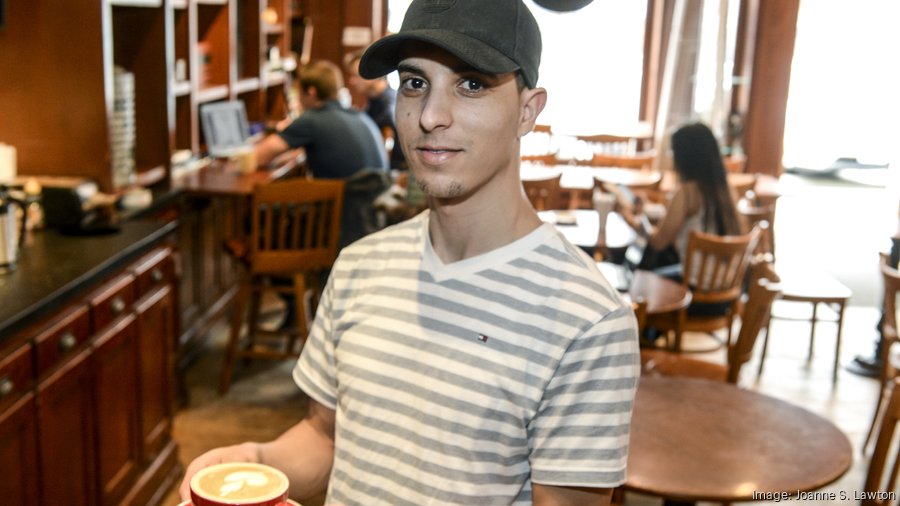
2. Coffee
Step into certain downtown coffee shops, and you’ll be hard pressed to find someone not in a meeting or job interview. With more small, independent coffee spots forgoing or limiting Wi-Fi in favor of creating an atmosphere conducive to more lively conversations, the coffee meeting has taken on new life in Washington.
In part, that’s because they’re easier to fit into busy schedules. You can also avoid that awkward attempt to share materials over a messy club sandwich.
“Having lunch, people start looking at their watch at the 30- or 40-minute mark,” said John Patton, head of global partnerships for Phone2Action. “So there’s less friction with a coffee and a little more flexibility.”
Elaine Chon-Baker, a restaurant investor who has an open-door policy for taking meetings, usually eschews lunch — especially when it’s someone who cold-called her.
“I prefer to meet people for coffee, usually, for one, because when the coffee’s done, so is the conversation,” she said. “It’s much shorter and a lot more informal and relaxed because you’re in a coffee situation as opposed to at a restaurant.”
It also helps avoid the discomfort that can sometimes come over the bill. Often, if a budding business owner is coming to Chon-Baker for advice, she feels there is pressure for her to pick up the tab.
“I don’t mind paying for a coffee, but sometimes when the bill comes at the end of the lunch, it’s an awkward ending,” she said, laughing. “Sometimes I feel like I have to pay.”
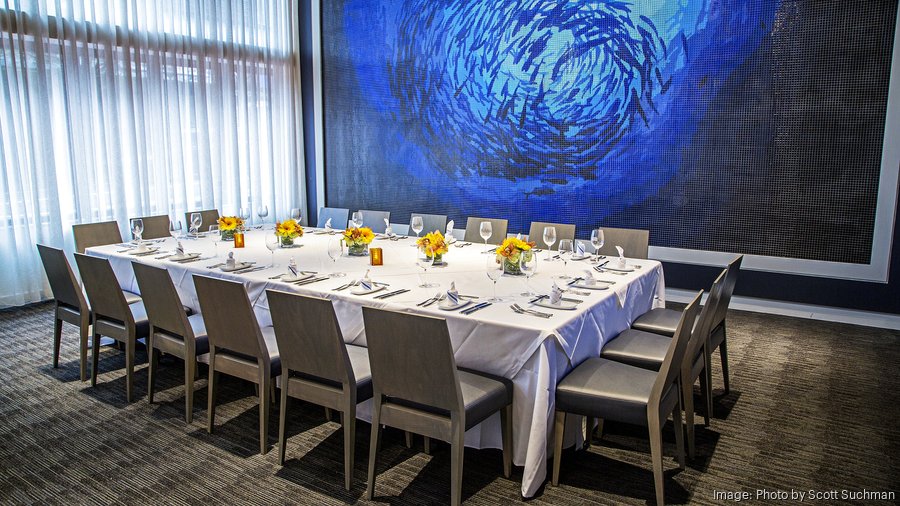
3. Private dining
One line of business where restaurants are making up some of that lost lunch money is in private dining — something that’s become more prevalent at both lunch and dinner, said DiMillo, the Passion Food Group executive.
“A lot of the power lunches that used to take place in the dining room have morphed into banquets,” he said. “We have seen such a tremendous rise of these larger lunch groups lunching with six to eight people or 15 to 30 people.”
The lunch banquets have never matched the sales brought in by the evening events, however.
Those private dining engagements range from an intimate dinner for 12 to a larger affair with cocktails and hors d’oeuvres beforehand. For evening events, people are throwing them right after work, so people don’t have to go home and then come back.
“The events are sensitive to their needs; they’re right after work, so people come hungry and thirsty, and willing to listen,” DiMillo said.
Passion Food Group has been particularly pleased with the volume of private dining at its newest restaurant, TenPenh in Tysons. The reprisal of the group’s former Pennsylvania Avenue NW spot melds together a range of Asian cuisines and caters to banks and tech companies in Tysons.
At Del Campo, Albisu has reserved the back part of his dining room for private dining during lunch, so he can still host private events even as he slings tacos up front.
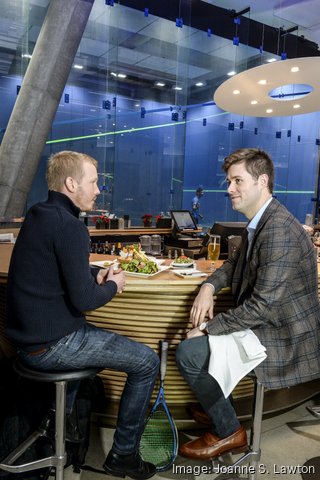
4. With workouts
D.C. consistently ranks among the fittest cities in the U.S., and there are plenty of people comfortable asking a professional contact to join them for an exercise class before talking shop.
Emily Rasowsky, director of marketing and communications for the Washington, D.C. Economic Partnership, was introduced to the SoulCycle cult by a colleague — and now she favors it over lunch or drinks.
“My meetings end up being a little more productive,” she said. “You’ve had a moment to relax, unplug for a minute, to turn off your phone for 45 minutes to an hour.”
She rarely sits down for a power lunch, mostly because she finds that most people prefer to work through lunch.
Patton of Phone2Action has met people who became professional contacts on the sidelines of matches at Squash on Fire, the new membership-free squash facility that opened in 2017.
The facility’s West End location, not far from Georgetown and K Street NW, is one draw. But so is the fact that competing in a sport together can take down barriers needed for meaningful conversation, Patton said.
“It takes out the awkwardness of networking, which I hate,” he said.
The facility was designed with that in mind, said Nadine Arsenyev of EastBanc, who runs Squash on Fire.
“You can sit on a couch and have a meeting or at a table for something more formal,” she said. “Even the design of the bar, which is like an amoeba, was intentional so you have these private little pockets where you can meet and socialize.”
Patton tends to shy away from work lunches because often, as a digital strategist, his meetings involve poring over a shared screen, or, at least, a piece of paper.
“When you have all this food on the table, it’s not conducive to getting much work done,” he said.
For a meet-and-greet, he prefers dinners, because people are more inclined to relax once the day is done and no one has to rush back to the office, he said.
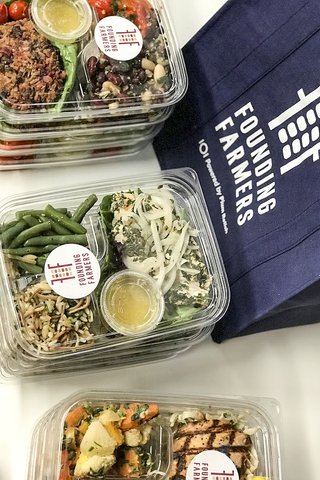
5. Lunch comes to you
Another business line cutting into some restaurants’ power lunch crowds is the in-house power lunch: services that bring lunch in for your team, your board or your meeting.
Sarah Van Dell started Plum Relish, which delivers bento-box-style meals designed by chef-driven restaurant groups such Mike Isabella Concepts and Farmers Restaurant Group, with this demographic in mind. Since her launch, she’s tweaked the model, reducing the minimum number of meals required to accommodate the likes of board meetings.
“We see a not insignificant number of board meetings that we cover, that we actually lowered our minimum from 15 to 10,” Van Dell said. “I get the sense that people are watching budgets and time.
“Convenience is a big factor,” she said. “More and more, people want to get home earlier. Everyone wants to have a better lifestyle, and they’re fine with it if that means not going out for lunch.”
Plum Relish is now bridging the gap between the restaurants that wish they could reach that lunch crowd and the offices where that crowd is actually eating. The company launched with its own menu made in a commercial kitchen, but shifted at the end of 2017 to offer meals designed by well-known chefs and restaurants. She expects to triple Plum Relish’s sales in 2018.
The restaurants get to reap the benefits of a lunch business even when they’re not located in a place that’s conducive to such meals. Mike Isabella’s restaurant group supplies bentos out of Kapnos, where it doesn’t serve lunch because there isn’t enough daytime traffic.
Van Dell’s challenge is to then offer the level of service people expect from a Mike Isabella restaurant in an office lunchroom.
“We’re a virtual waiter in a sense, the leap from hospitality on premise at restaurants to off premise,” she said. “We’re on this personal quest of: How do you get diners more loyal to your retail brick-and-mortar through this catering?”
Which is, at the most basic level, what all of D.C.’s restaurants really need — at lunch and the rest of the time, too.
Not convinced? Tips from a true power luncher
Lobbyists make up their fair share of the people who are still power lunching around D.C. Why? For one, most of them — and their targets — would rather not have a record of those conversations.
“Everyone is heavily dependent on electronic communications, but not everything should be written down,” said Heather Podesta, the powerful lobbyist behind Invariant who spoke with us about her lunch habits. She frequents a few spots close to her office at Seventh and Eye streets NW, including Tosca, Centrolina, Fiola and Casa Luca. Here’s more of her take:

What’s the ideal outline of a power lunch today? Physical proximity to your offices matters, the ability to have a real conversation without hearing other people’s conversation matters, and to have a lovely lunch, but to not have it linger. No one wants a lingering lunch, but they do want an hour and 15 minutes. Enough so you can catch up with the person in terms of what’s happening with their personal life, and then talk business, and then return to the personal.
How do you choose your preferred lunch spots? I do tend to go to the same restaurants. Part of it is the food is so good. I also know that the service will be excellent — and that I can be left alone. Nobody does a better business lunch than Tosca from a sheer patron perspective.
Why aren’t restaurants as busy at lunch? Part of it is that the array of options has so multiplied. The business lunch, or working over a lunch, is still a big part of what people do in D.C. There’s just so many options to choose from, especially downtown.
What makes business lunch so valuable? We’re so caught up in consuming information visually or listening to the news, responding to emails or Slack, that it is really a different kind of oxygen to be face-to-face and catch up and cover a lot of ground over a meal.
